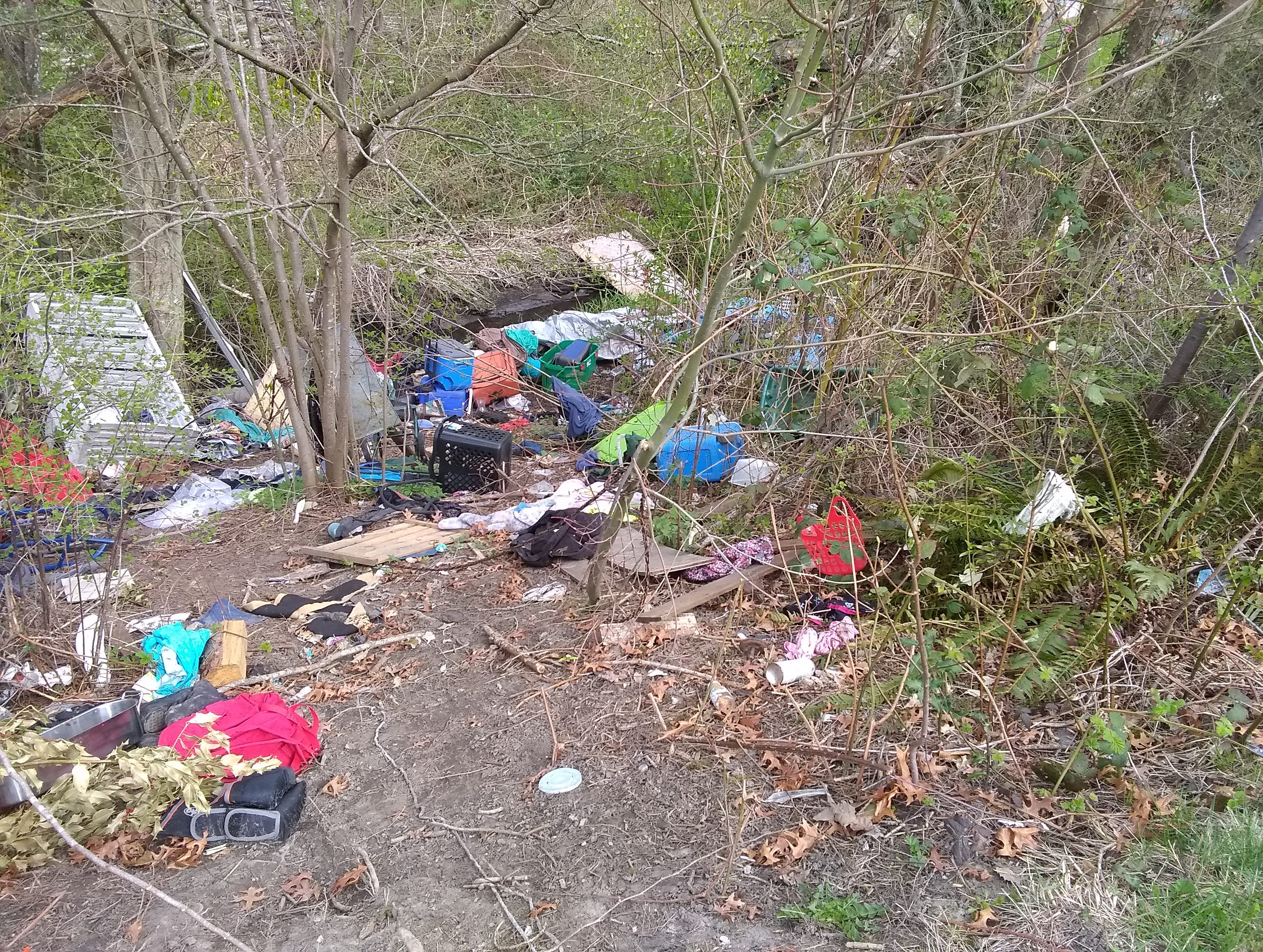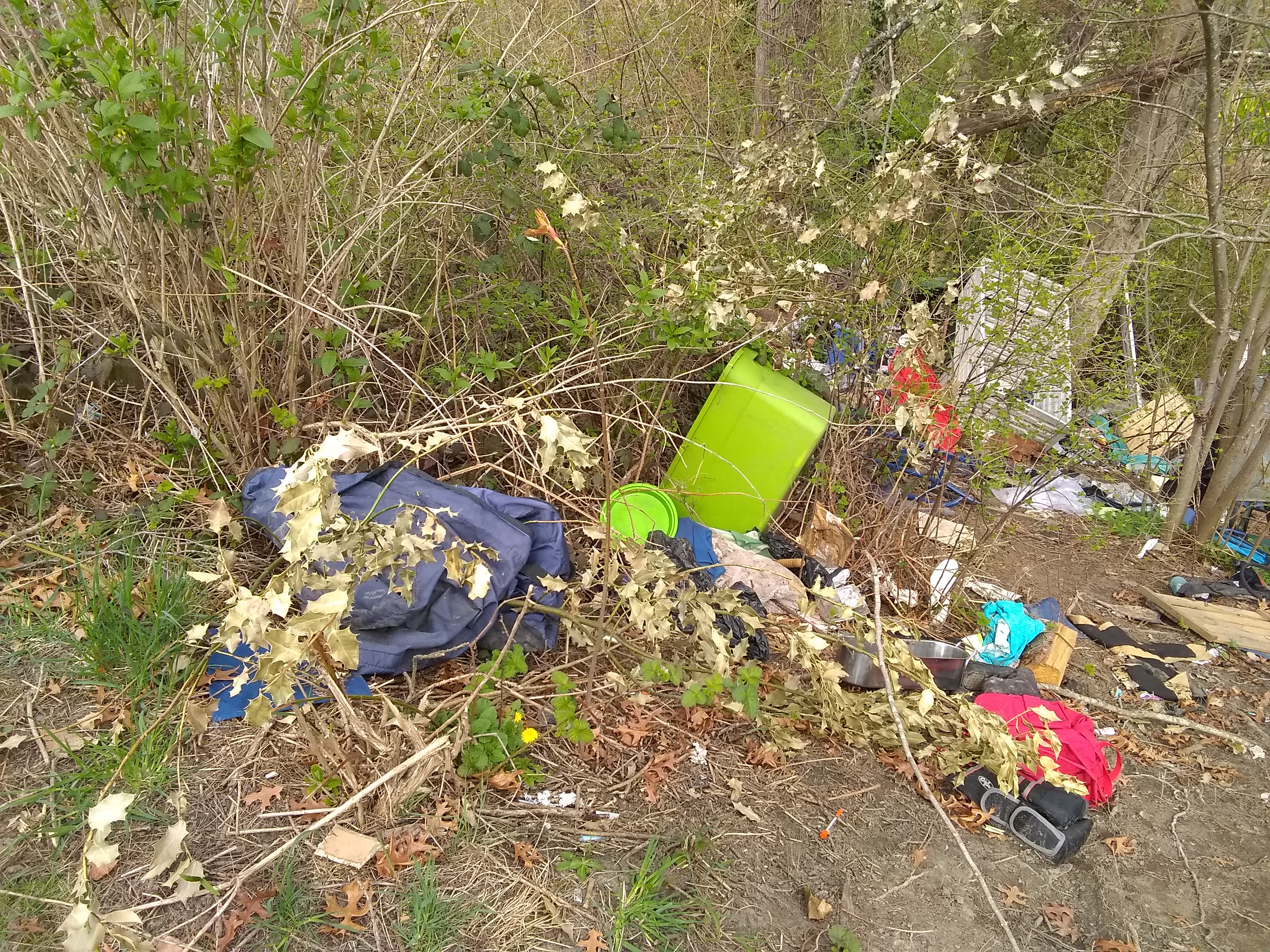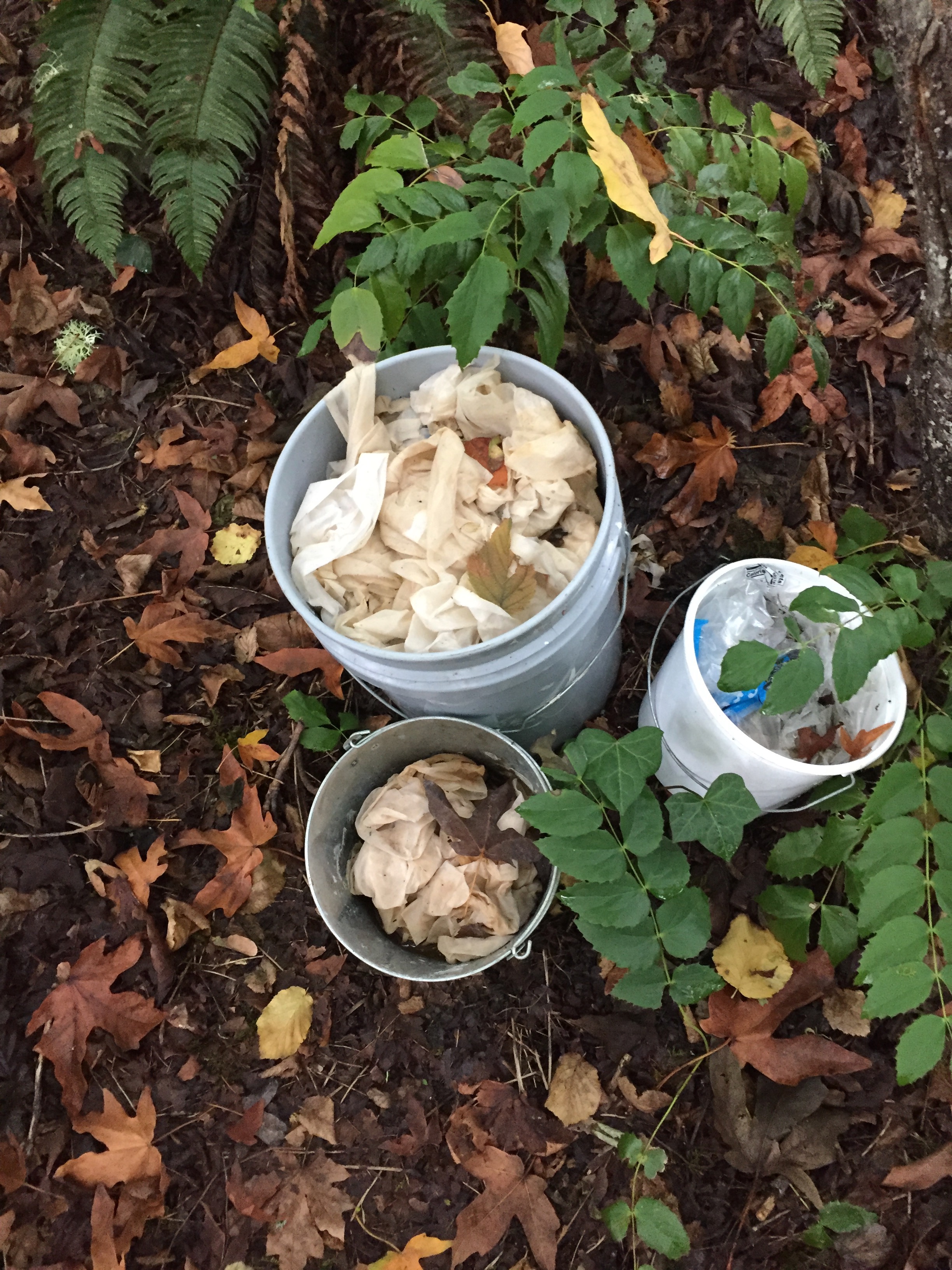Environmental Damage and Homeless Camps
Project Description
TCA has been a leader in the effort to get Seattle elected officials to recognize and address the environmental impacts of homeless encampments in parks and green spaces. Those impacts include erosion, destruction of native vegetation, debris accumulation, water quality issues, habitat destruction, public health issues (including hypodermic needles and possibly E. coli fecal coliform bacterial contamination of the creek and its tributaries), and discouragement of public use of parks and green spaces. We’ve written several letters and emails since September 2017, and have spoken personally to one mayor and various City Council members, including on a tour of part of the Thornton Creek watershed.
We recognize that everyone needs a place to live that is safe, clean and affordable, that homelessness and affordable housing are major issues in King County which will not be solved overnight, and that not all homeless individuals will avail themselves of shelter and other offered services. But we also desire universal recognition that sustainable living includes not just social and economic components but also an environmental one. Camping and littering in Seattle parks are prohibited under Seattle Municipal Code. We do not wish our many years of productive work to preserve and protect environmental values in the Thornton Creek watershed, in collaboration with City and County governments, to be undone by the sanction of environmentally-destructive practices. We want to see more timely response to unauthorized encampments in parks and green spaces, and will continue to work with all concerned organizations to develop constructive solutions.




Recently the city put forward plans to develop that property on NE 125th (Little Red House). It is our contention that, prior to spending tax dollars and soliciting citizen involvement, the MUST demonstrate a resolve to clear that site of illegal campers, trash, and drug activity. This activity included suspected drug manufacturing. We live just downstream from that site can attest to the increase of trash and chemical pollutants. Without a commitmen t to clearing and securing this important part of the watershed, any plans for development are a waste of resources.
I live near Mathews beach and swim in the lake regularly. I was disturbed by the recent fecal coliform rating which could not just be geese. There was an encampment on the lake shore and the water foul usually there were absent. The encampment was cleared, the birds are back. I hope the illegal camping will continue to be regulated and the water quality will return to normal.
The Thornton Creek Watershed includes the open channel running along the west side of 17th Ave NE near the intersection of NE 143rd St. It is not just homeless encampments that degrade the water sources of Thornton Creek, but also the illegally parked RVs and trailers that proliferate at this intersection. I have witnessed the occupants of these vehicles pour liquid human waste into the open channel, as well as oil and other waste. The city’s failure to address this recurring problem affects not only the fish and wildlife that Thornton Creek supports, but leads to a sense of hopelessness among the residents of this area. Clearly the city does not care enough about the people that live legally in this mixed area of low to middle income families to enforce the laws that prohibit pollution and degradation of their environment.